The Legends
The villagers had limited options. The dragon beneath a nearby hill was waiting to consume their sheep and the last of their daughters. Young man after young man had failed to defeat the terrible monster. With few willing to risk certain and fiery death, the villagers put out a call for help. A cobbler’s apprentice stepped forward, though he was but a simple man and called foolhardy and suicidal. The apprentice had no armour nary a sword but he offered an ingenious plan to slay the dragon. He used all his money to buy three sheep and some sulphur. He stuffed the sulphur into the sheep and seasoned the carcasses with spices to fool the dragon into eating it. The poison would do the trick, he hoped.The apprentice dragged the sheep to the entrance and waited. Awakened and in a rage, the dragon emerged from the cave and devoured the sheep in one go, and then retreated toward the cave. But just as he reached the entrance, a mighty gurgle and roar came from his belly, a reaction to the sulphurous mixture. The dragon, though, did not die. He marched to the Vistula and drank some water. Then he drank some more, then more and more until he had drunk half the river. He swelled so large he exploded and only mere scraps fell to earth. The successful apprentice-turned-slayer inherited the treasures of the dragon’s lair and became king, King Krakus, with his castle set on the nearby hill above the dragon’s lair. The apprentice, some trickery and the flowing river had slain the dragon and created the legend of Wawel Castle.
If Wawel Castle is the spiritual heart of Poland, the Vistula River is its lifeblood, from a source of irrigation and trade to a setting for recreation and entertainment. Called the “Queen of Polish Rivers,” the Vistula gathers waters from the southern mountains near Krakow and stretches them peacefully over a thousand kilometres to the Baltic Sea in the far north at Gdańsk. Although peaceful most days, the river sweeps up more than half of the water in the country and frequently reminds residents of their feeble attempts to pacify it.
The Floods of 2010
Large-scale floods in 2010 caused by heavy rain and rapid snowmelt in the mountains forced cities up and down the river to race to sandbag streets and buildings along its banks. In Kraków, the mayor declared a state of emergency after the river passed the high-water mark at 74cm above average. The next day the river swelled to 300cm above flood stage. The massive stone bulwarks lining the river held firm, though, and channelled most of the problem past the city and downstream to other cities, which suffered inundation. In some cases the water clearly revealed the naivety of local officials who had allowed wide development in the now soaked flood plains. About a month after wave upon wave had passed, Kraków and the other cities dried out and returned to normal and the tamer river continued flowing, almost acting as if nothing had happened.In Krakow, the floods disrupted one of the city’s grand traditions: the Wianki Festival. This annual festival celebrates the summer solstice with live music, a street fair, buskers, a massive concert featuring top performers on the river banks and a rite where young girls and women in white dresses create and toss flower garlands into the river as a symbolic test of love. If the garland is caught in a bad current, becomes entangled in weeds near the shore or sinks, her love may be doomed. But if it flows freely, her chances for true love are great. It also celebrates, in part, the story of the sacrifice of Wanda, the daughter of the legendary king of Krakus, who as Queen refused a German prince’s offer of marriage and commenced a war. She jumped into the turbulent river and drowned, thus saving Poland from the invaders.
What to Do & See
Today, the Vistula has been largely contained. Several dams slow its advance and bulwarks and other flood-control devices protect cities. The Kazimierz district once upon a time was actually an island stuck between spurs of the river until the northern side was filled in, uniting it with the rest of the city. In one case, though, the river near Krakow has been captured and put to froth—on purpose—in one of the world’s finest artificial white water parks. The 320 metre course is just a meter and a half deep but can be set to test some of the best paddlers. For beginners hoping just to survive, certified instructors at the Cracow Kayak Club can help get them started and navigating the flags in no time. For the less adventurous in the group, the club boasts a sauna, jacuzzi and swimming pool on site.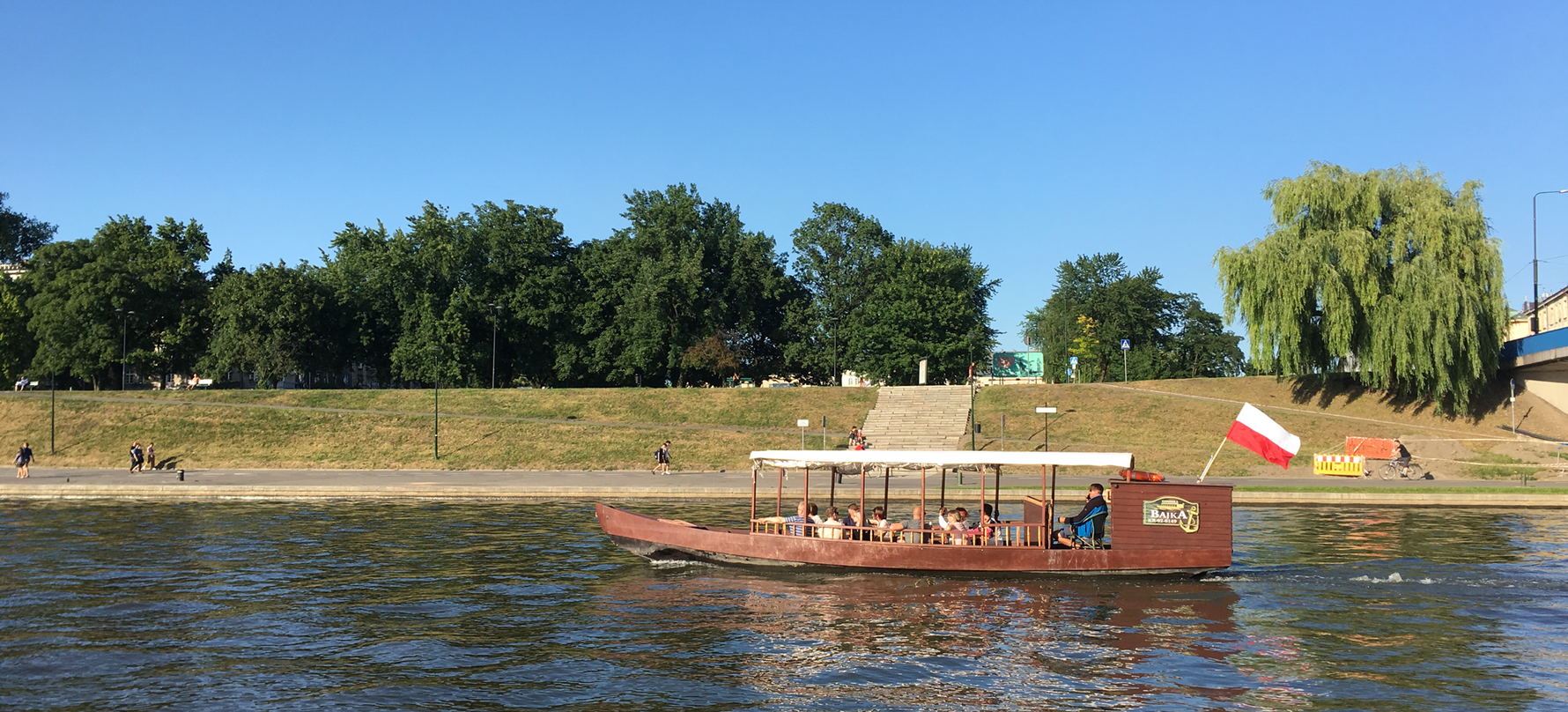
Swimming in the Vistula is not normal in Krakow, or perhaps, anywhere since the end of communism. Old photos of Poland from the early 20th Century show young men jumping into the water or basking along its shore, presumably warming after a cold swim. But intensive industrialism under communism turned the Vistula into a dumping ground. In 2008, Greenpeace members in Poland organised a float trip aboard a home-made “recyclable” pontoon raft dubbed “Pereput” after the Slavic goddess of fortune and merriment. Outfitted with just a simple outboard, planks of plywood for decking and an improvised cabin with an attached outhouse hanging over the side, the boat travelled slowly for more than a month the length of the river from Kraków to Gdańsk. At each of 10 stops, the crew set up a mobile presentation showing the beauty of the river, but also the environmental challenges it faces and called on people to petition the government and the EU for additional protection for Poland’s most important river and cleanup efforts that would make it possible to swim freely in the river by 2015. Though the most serious negative industrial effects have largely been offset or reversed since the end of the Cold War, the perception is that the river is dangerous. Kayakers and others who actually run the river have put paid to that notion, but it still exists and locals will certainly frown upon the suggestion of diving into the river on the city’s hottest days. Instead, they prefer several excellent spots within a few kilometres of the river, such as Kryspinów reservoir. But that doesn't mean visitors and locals can’t bask in the warm sun along the riverbanks. In the spring and summer, locals and visitors flock to the grassy slopes beneath Wawel Castle to picnic and sunbathe. Pretty much anywhere along the river are spots for public and semi-private sunbathing, though nude or topless sunbathing likely will draw some flak from the water police, the town guards or some of the older ladies bent on enforcing religious dogma. Other than nudity, just about any form of PDA is tolerated, normal and vigorously practised, especially on benches along the river.
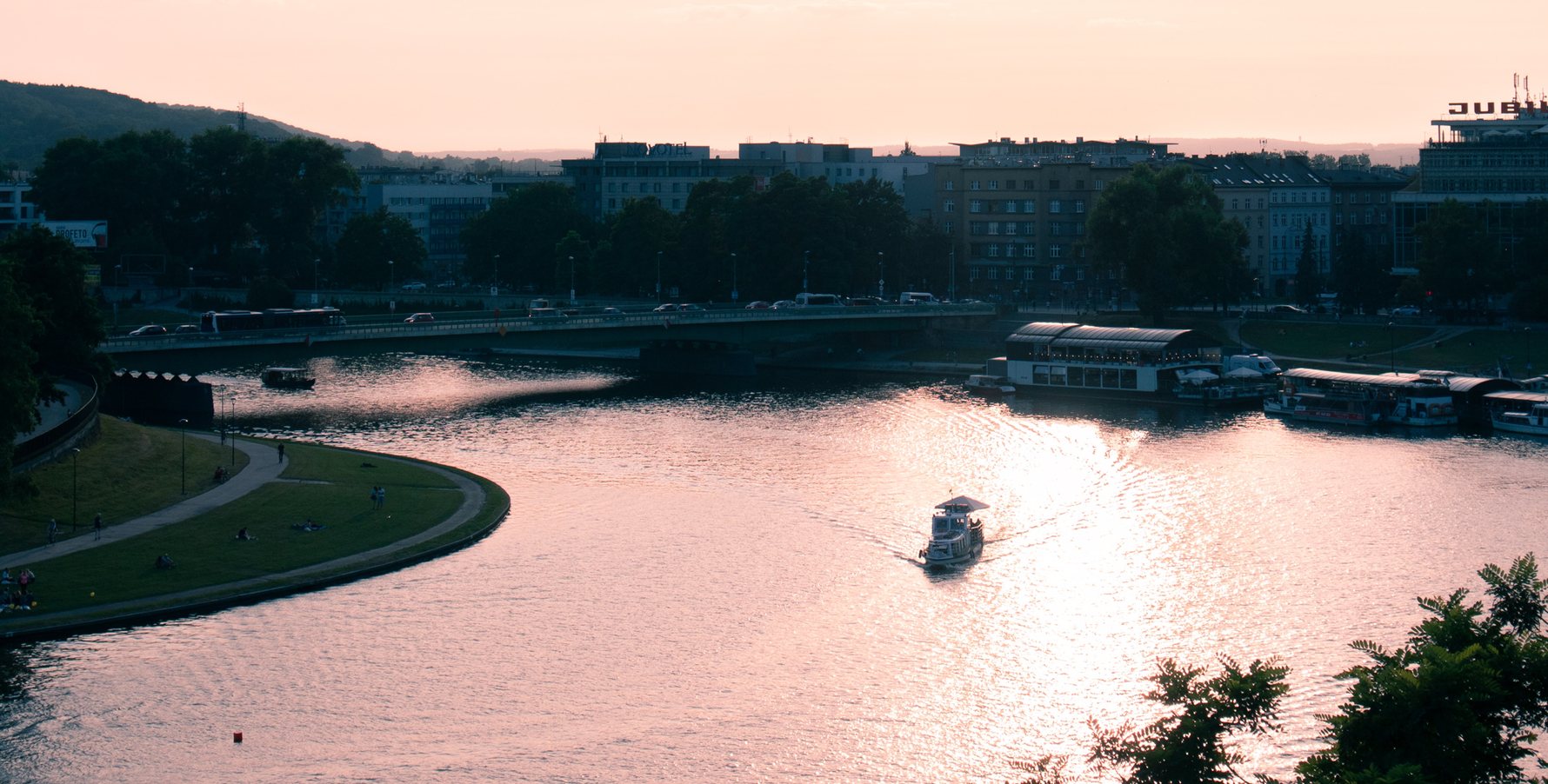
Because of development and frequent high water flows there is no true beach left in the city of Kraków. Aside from the domineering Hala Forum - a massive riverside beer garden beneath the Forum Hotel - options for food and drink directly next to the river are limited, mostly by the focus toward the centre and the high bulwarks. However, there are plenty of restaurant and café boats docked along the river, providing cool spots on warm days. Some can be rented at night for private parties and it’s not unusual to see, or hear, a Polish wedding reception or some other party aboard one of the larger ones.
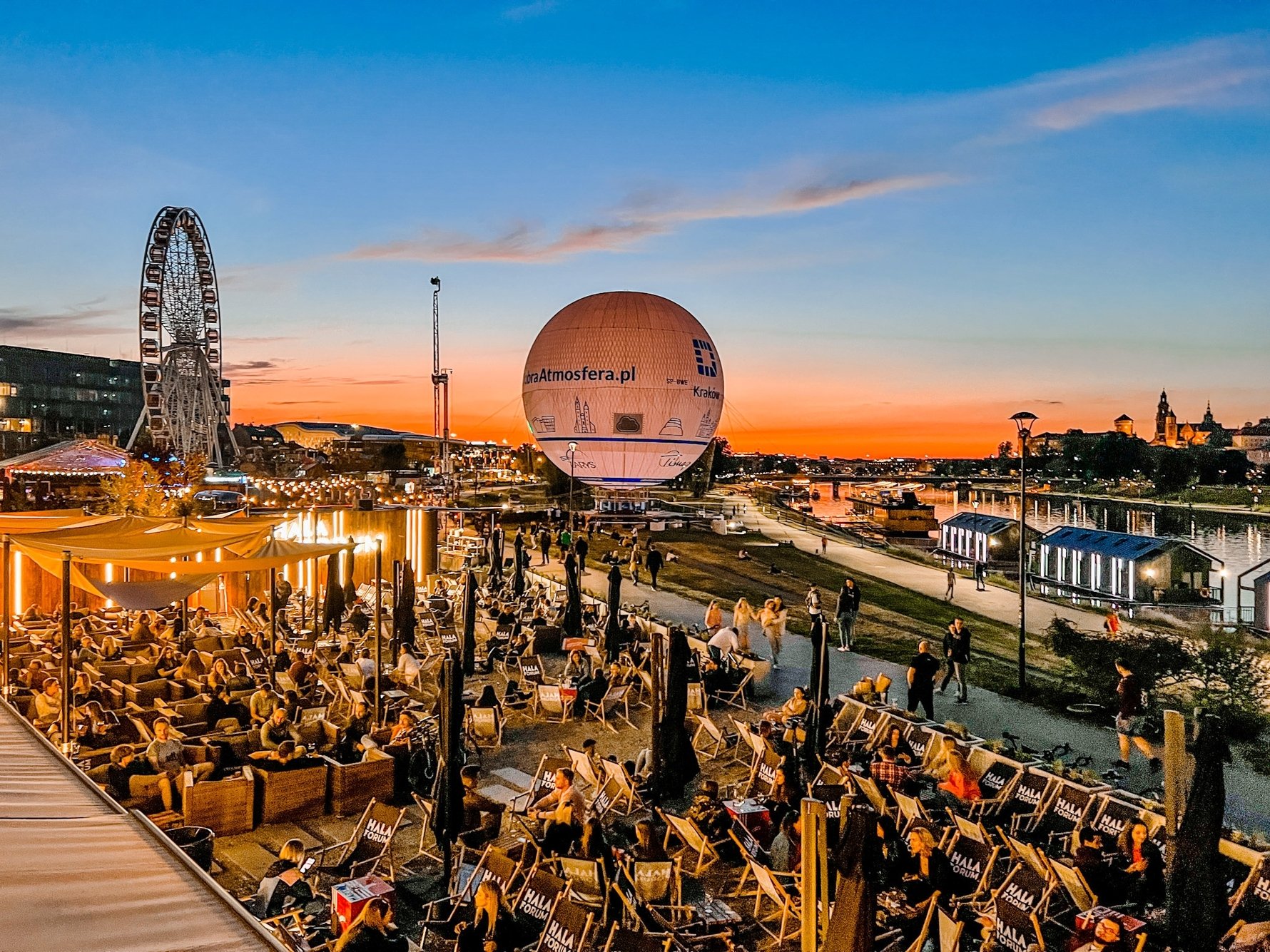
While the restaurant boats are docked more or less permanently, there are a number of tourist boats that ply the waters from Wawel Castle to just outside the developed city in the spring and summer. These boats give a good feeling for the river and life on its banks. During the high season water trams also run from Galeria Kazimierz to Tyniec Abbey about 15km southwest of the city centre, and visitors can rent paddle boats and canoes for a more up-close experience.
Walking and cycling along the river are everyday passions for many residents. While there are many bridges crossing the river, until recently priority has been given to cars, buses and trams. In 2010, that changed with the opening of the Bernatek pedestrian bridge linking the club-and-restaurant-heavy Kazimierz to the sleepier, up-and-coming Podgórze district. Named after a popular priest, the footbridge is no concrete plank across the river. It was positioned at embankments where a previous bridge washed away in 1813, and is as much an artistic endeavour as an architectural one. Two ramps hang from a giant arched tube, one providing space for walkers while the other is for riders. There’s enough room for users to pass each other and bystanders easily.
At night, the bridge is illuminated, turning a once-eerie, slightly concerning part of the city into a pleasant place to meander. Of course, one of the first traditions, after it was inaugurated, was for some young lovers to slap a lock engraved with their names on it, declare true love to each other and throw the keys to the river. Hundreds, if not a thousand more have copied the now-world popular tradition, adding instantly to the charm and acceptance of the new bridge. Meanwhile, back along the river, throngs of teens and young people chat and flirt along the paved walkways while the city lights shimmer off the water.
During the daytime, the pathways are used by walkers and joggers and many cyclists. One of the city’s best cycling routes starts in the centre and winds along the river to the Tyniec Abbey. It’s paved the entire way for easy and safe riding. Visitors can find rental bikes available throughout the city, with some offering return rides from Tyniec via riverboat.
Set on the right bank, Tyniec is a special place along the Vistula as the 11th Century monastery was mostly abandoned in 1844. Since a renewal of interest in the 1930s, it has sprung back to spiritual and commercial life with the Benedictine monks opening most of the Abbey to the public. A shop with goods created or chosen by the monks and a restaurant with lunch and drinks provides space for people to relax and enjoy the views of a beautiful bend in the river from the abbey’s ancient, broken but secure wall set on a cliff high above the water.
Below, the waters of the Vistula bend sharply against the shore in their journey toward Krakow and onward to the sea. From King Krakus to now seems like a long and enduring time when sitting in a thousand-year-old abbey, but as one contemplates the Vistula, it’s easy to see that all that history is but a speck in the time of this steadfast river.


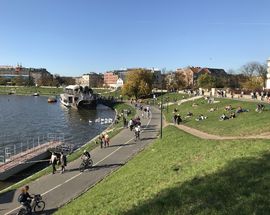
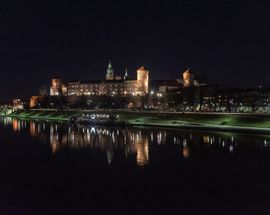
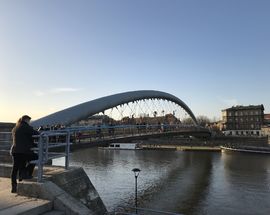
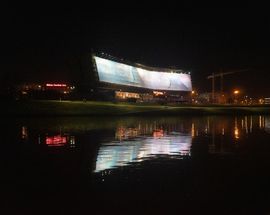
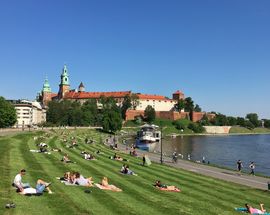
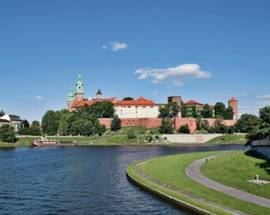
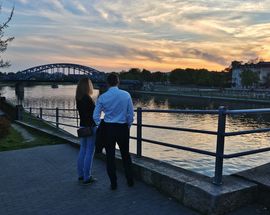
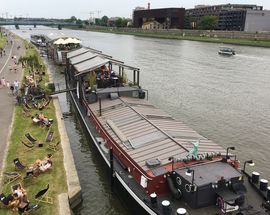
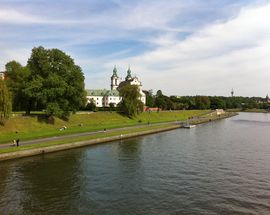
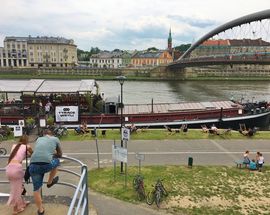
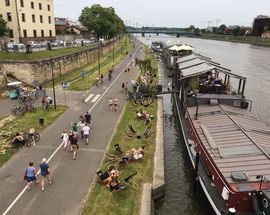
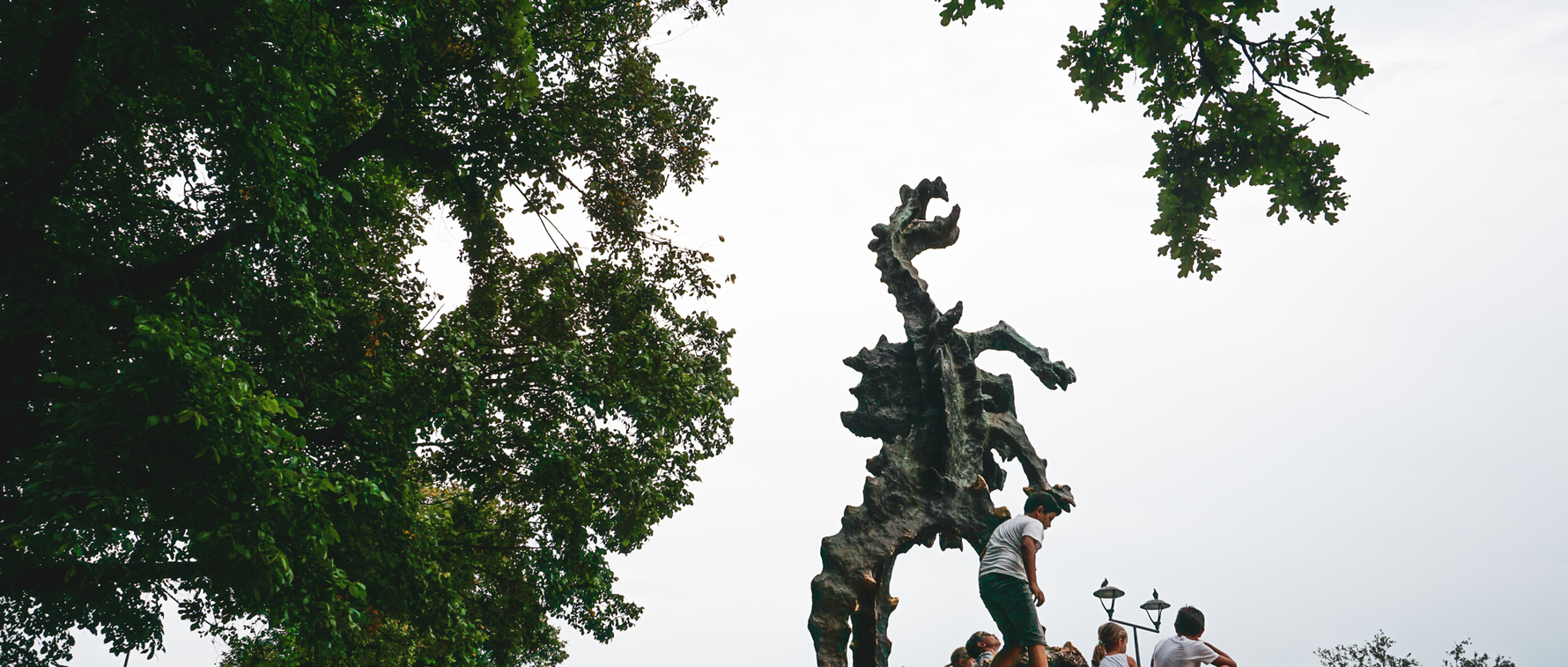
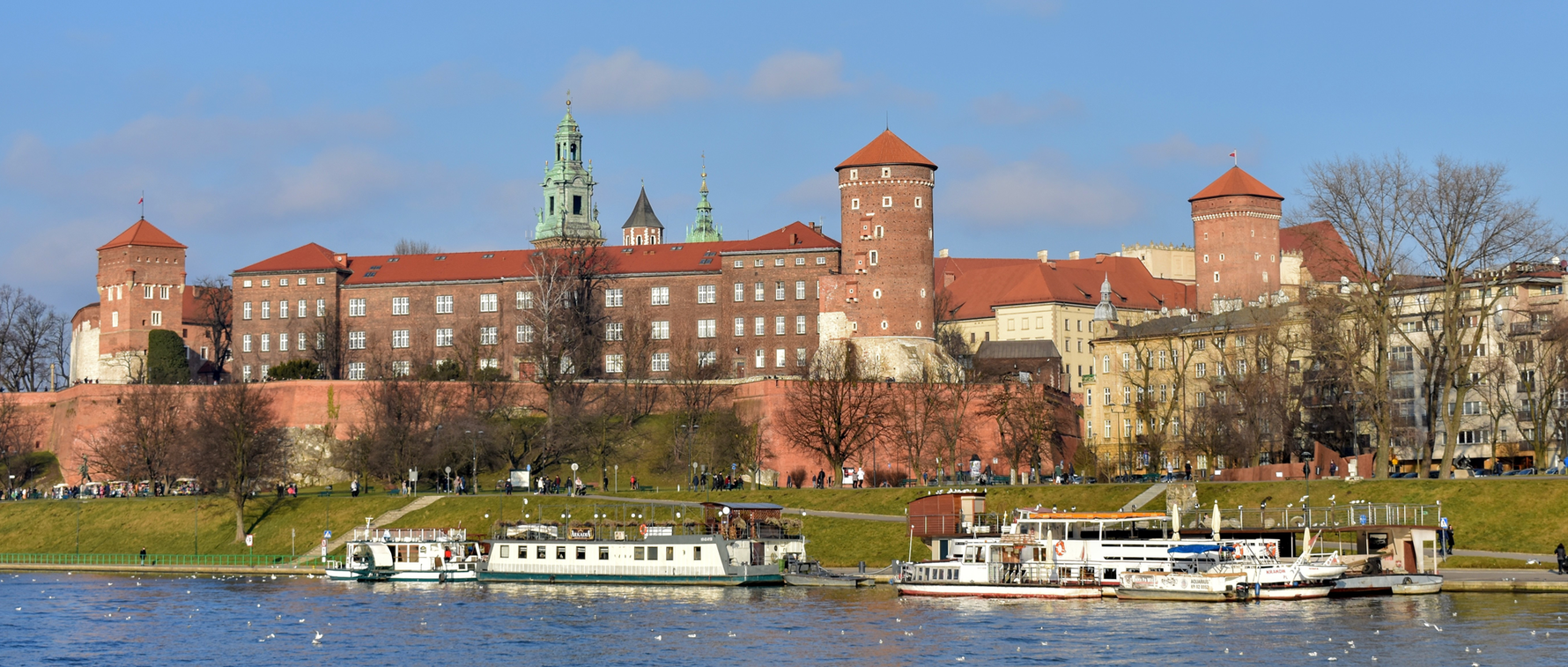
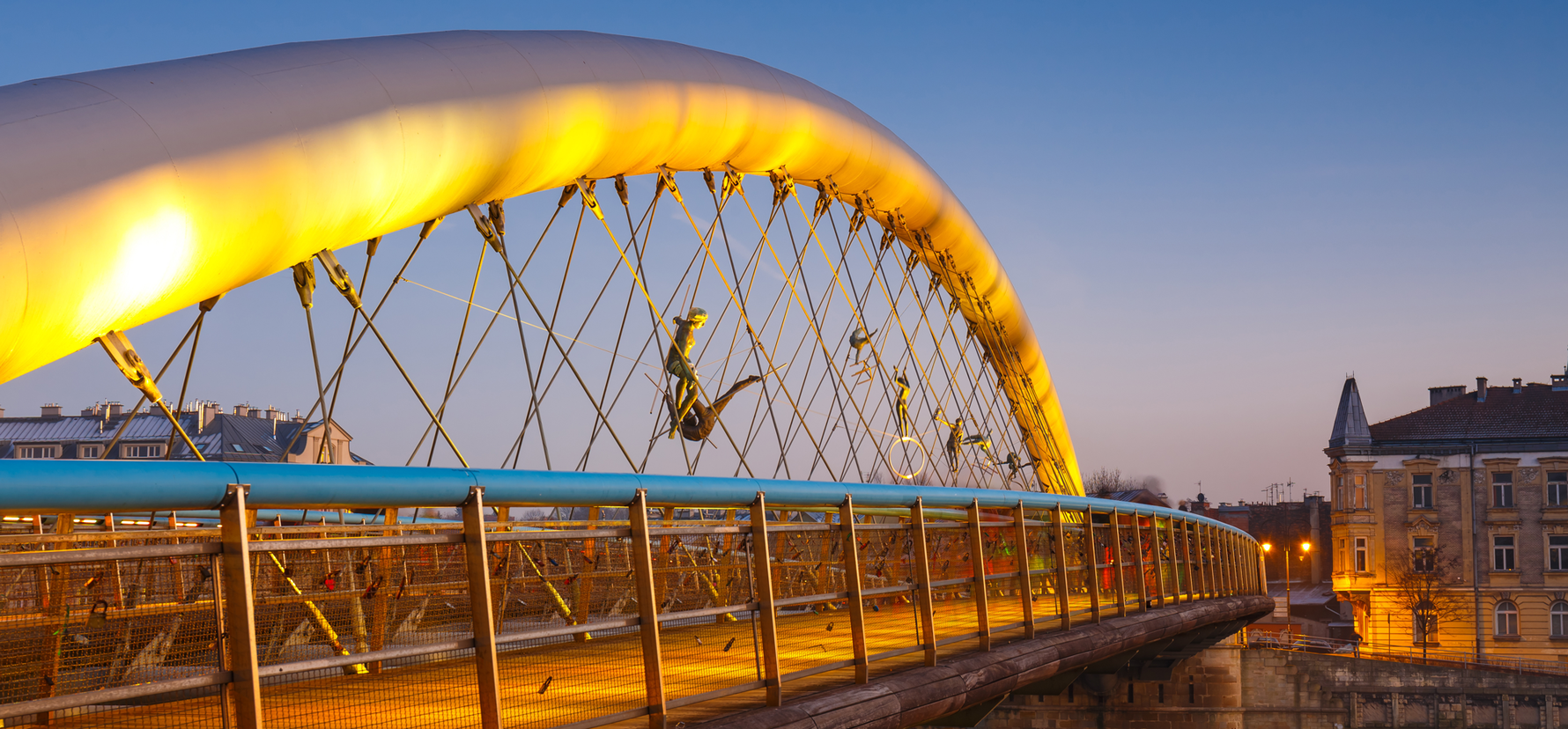
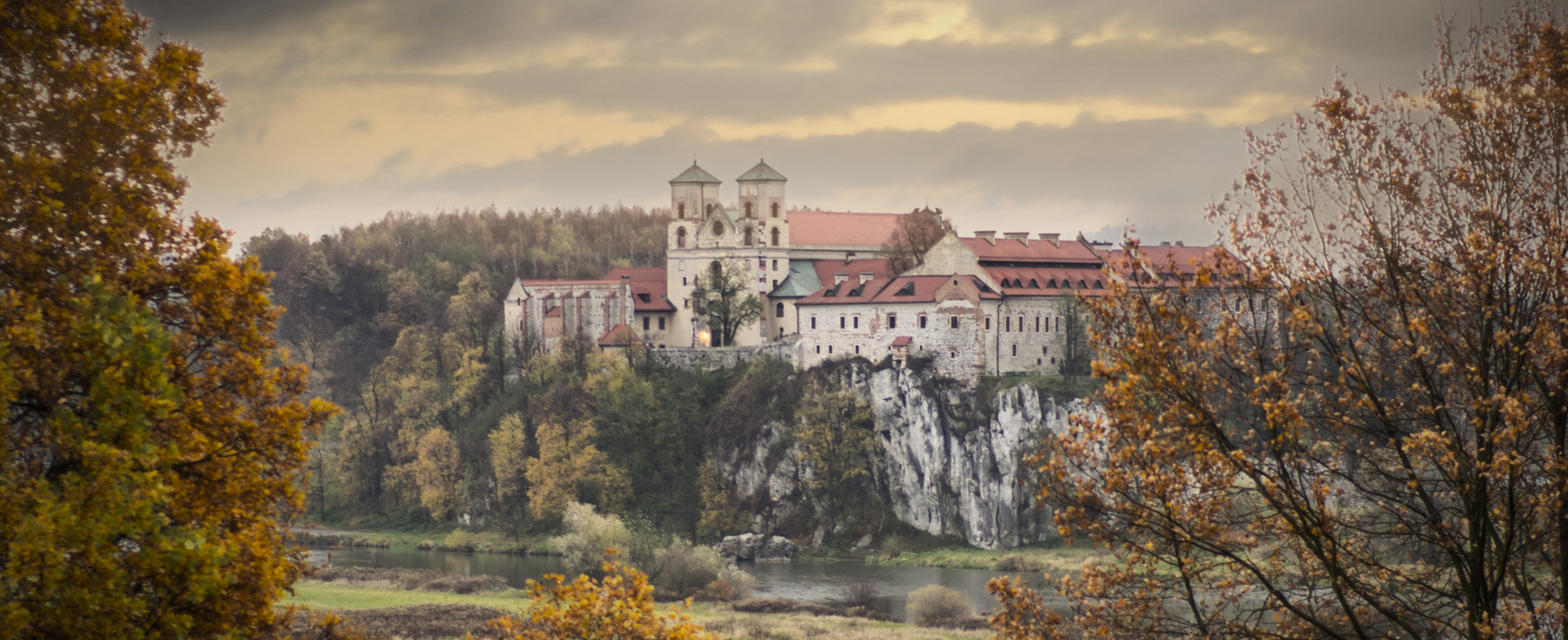

Comments